Hornwort (Scientific: an amazing aquatic plant that’s both easy to grow and a fantastic addition to your underwater haven. If you’ve ever wondered how to keep your Hornwort thriving, you’ve come to the right place.
Related: Check out all our Freshwater Plant Guides Here.
In this Hornwort Care Guide, we’ll explore all the tips and tricks you need to keep this plant happy and healthy in your aquarium.
Table of Contents
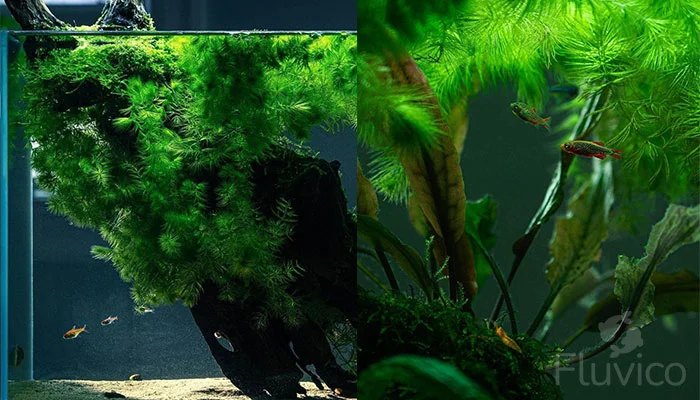
Hornwort Facts & Overview
Let’s start with a quick introduction to Hornwort. Known scientifically as Ceratophyllum demersum, this versatile plant is a popular choice for aquarists of all levels.
Its feathery, needle-like leaves,(that grow upwards like horns), make it a beautiful and eye-catching addition to any tank.
| Attribute | Value |
|---|---|
| Hornwort Scientific Name | Ceratophyllum demersum |
| Category | Rating Genus: Ceratophyllum |
| Care Level | Very Easy |
| Growth Rate | Very Fast |
| Maximum Size | No Maximum |
| Minimum Tank Size | 10 Litres (With regular trimming) |
| Water pH | 6.0-7.5 |
| Water Hardness | 5-15 dGH |
| Water Temperature | 59-86°F |
| Lighting | Any (Prefers Moderate) |
| Propagation | Side shoots |
| Placement | Background or Floating |
Related: See more floating plants
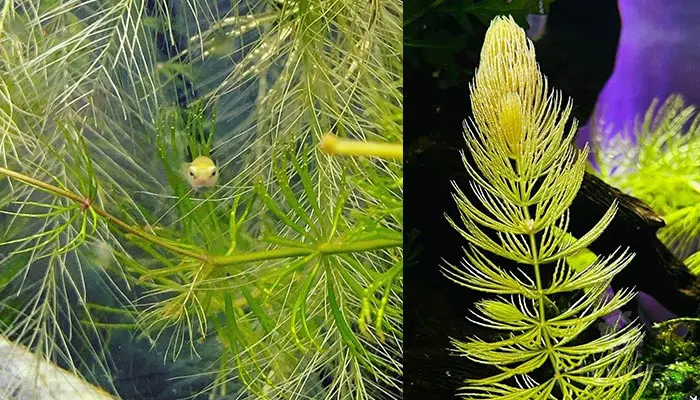
Benefits of adding Hornwort to your Aquarium
Adding Hornwort to your aquarium comes with a bunch of benefits. First off, it helps oxygenate the water, keeping your aquatic buddies happy and healthy. It also provides a cozy shelter for your fishy friends, giving them a place to hide and feel secure.
Hornwort – The Ultimate Spawning Fish Nursery?
It’s a popular choice for spawning fish. The dense foliage provides an excellent hiding spot for fish eggs and fry, offering them protection from potential predators. It’s like a natural nursery for your fish babies!
Plus, it enhances the overall health of your tank, creating a vibrant and balanced ecosystem. So, if you want to boost the well-being of your aquatic environment, Hornwort is definitely worth considering!
Disadvantages of adding Hornwort to an aquarium
While Hornwort can be beneficial, there are a few downsides.
- It can grow super fast and take over your tank, potentially blocking light for other plants.
- It can be messy as it sheds needles, especially in poor water conditions.
- It’s a nitrate sponge, which is great for water quality, but might out-compete your other plants for nutrients.
Also, be very careful is disposing of Hornwort. It’s an invasion specifies and can spread fast outside of a sealed aquarium environment.
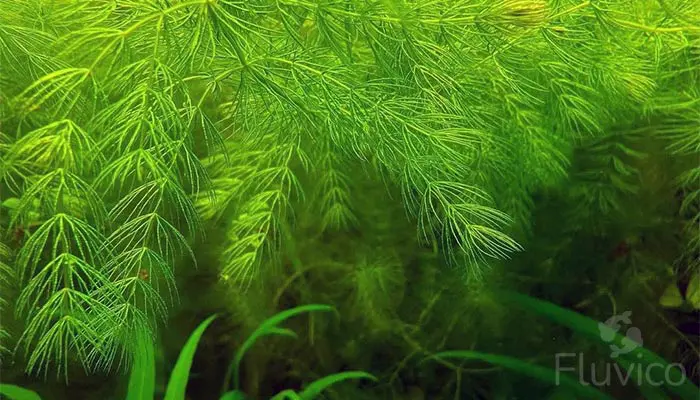
How to Care for a Hornwort Plant
Tank Size Requirements
Good news! Hornwort is super adaptable and can be kept in pretty much any aquarium size. If you have a smaller tank, like a 10-20l Nano Aquarium, keep an eye on its growth and trim it back regularly to prevent it from taking over.
Since Hornwort doesn’t need substrate it’s a useful addition as a floating plant to help keep water parameters safe without taking up much room. For larger aquariums, Hornwort can also be a fantastic addition by providing a lush and natural look.
Just remember, no matter the size, it’s all about managing the plant’s growth and making sure it doesn’t crowd out other plants or block light.
Planting Vs Floating Hornwort?
Floating
Floating Hornwort has some awesome perks! First off, it creates a natural “roof” at the surface, giving your fish and invertebrates a cozy, shaded spot to hang out. This can help reduce stress and make them feel more at home.
Plus, since it’s not rooted, it can easily adapt to changes in water levels or flow, making it a low-maintenance choice for your aquarium. And let’s not forget, by floating, it gets maximum access to light, allowing it to grow quickly and efficiently gobble up excess nutrients, which helps keep your water clean and clear.
Planting
Planting Hornwort comes with its own set of cool advantages! When anchored in the substrate or attached to decorations, it adds depth and texture to your aquarium’s aquascape, creating a more natural and appealing environment for your fishes.
By planting it, you can control its growth more easily, and it won’t float around, shading other plants or taking up space near the surface. This way, it won’t be competing with other floating plants for light and nutrients.
Also, when planted, Hornwort provides a great hiding spot for bottom-dwelling species, giving them a safe refuge from any potential bullies in the tank. So, if you’re up for a more structured look and want to create a beautiful underwater landscape, planting Hornwort might be the way to go!
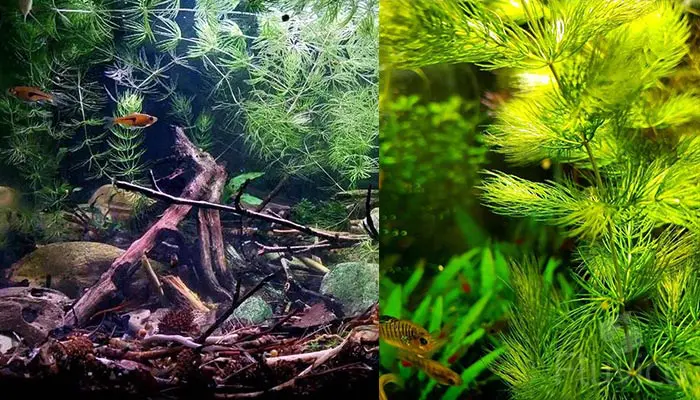
Maintenance and Care
Follow these simple steps to keep your Hornwort thriving in your aquarium: Lighting:
- Moderate to high light levels (2-4 watts per gallon)
- 10-12 hours of light daily
Water Parameters:
- Temperature: 59-86°F (15-30°C)
- pH: 6.0-7.5
- Hardness: Soft to moderately hard water
Substrate and Placement:
- Can be planted in substrate, attached to decorations, or left floating
- For planting, use fine-grained substrate or anchor with plant weights
Nutrients and CO2:
- Can benefit from liquid fertilizer for optimal growth
- CO2 supplementation not required but can promote faster growth
Maintenance:
- Trim regularly to manage growth and prevent overcrowding
- Remove shed needles from the tank to keep it clean
- If planted, check for any detached stems and re-anchor if needed
By following this straightforward guide, your Hornwort will flourish and contribute to a healthy, balanced aquarium environment. Common Problems with Hornwort and How to Fix Them
- Excessive Shedding:
- Possible causes: Poor water quality, inadequate lighting, or temperature fluctuations
- Solutions: Test and adjust water parameters, ensure proper lighting, maintain stable temperature
- Slow Growth or Pale Leaves:
- Possible causes: Insufficient lighting or nutrient deficiencies
- Solutions: Increase light intensity, use liquid fertilizer to supplement nutrients
- Overgrowth:
- Possible cause: Hornwort’s fast growth rate
- Solution: Trim the plant regularly to manage size and prevent overcrowding
- Algae Growth on Hornwort:
- Possible causes: Excess nutrients, inadequate water circulation, or too much light
- Solutions: Adjust nutrient levels, improve water circulation, or reduce lighting duration
- Rotting Stems or Leaves:
- Possible causes: Poor water quality or decaying plant matter
- Solutions: Test and adjust water parameters, remove dead or decaying leaves and stems
By addressing these common issues, you can ensure the health and vitality of your Hornwort plant in your aquarium.
How to Propagate Hornwort (Take Trimmings)
Propagating Hornwort is not only super easy but also has some fantastic benefits. By propagating your plant, you can create a lush, green environment in your aquarium, share it with fellow hobbyists, or even help maintain optimal water quality in multiple tanks.
Plus, it’s a cost-effective way to expand your aquascape without purchasing new plants.
Let’s walk through the simple process of propagating Hornwort!
To propagate Hornwort, just follow these steps:
- Choose a healthy stem: Select a strong, vibrant stem from your existing Hornwort plant.
- Trim the stem: Using aquarium-safe scissors, snip off a 4-6 inch (10-15 cm) section of the stem. Make sure it has plenty of healthy leaves.
- Prepare the cutting: Remove any leaves from the bottom 1-2 inches (2.5-5 cm) of the stem to prevent rotting.
- Plant or float the cutting: You can either plant the trimmed stem into the substrate, attach it to a decoration, or let it float freely in the tank. The choice is yours!
- Monitor growth: Keep an eye on the cutting to ensure it starts growing and developing roots or side shoots.
And that’s it! In no time, you’ll have new, healthy Hornwort plants sprouting up in your aquarium, helping create a beautiful and balanced aquatic environment.
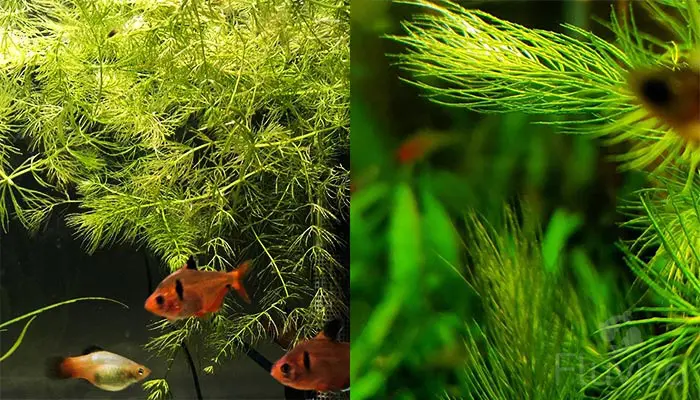
Tank Mates and Compatibility
Hornwort is a pretty easygoing plant and gets along well with a wide variety of tank mates. Its compatibility with different aquarium species makes it an excellent choice for diverse aquatic setups.
There are a few fish species that might not be the best companions for your Hornwort because they could potentially damage the plant. These fish are usually larger or have a habit of nibbling on plants, uprooting them, or using them as a snack.
Some examples of fish that may damage Hornwort include:
- Goldfish: They’re notorious for munching on soft-leaved plants like Hornwort.
- Cichlids: While some dwarf cichlids can be okay, larger or more aggressive species like Oscars or Jack Dempseys can dig up or shred your Hornwort.
- Silver Dollars: They’re plant eaters by nature and will munch on the tasty Hornwort.
The Hornwort is a healthy and nutritious snack for your fish. It grows fast, and it’s cheap to buy.
The only real downside is that your tank will look messy, but at least your fish will be happy!
Hornwort Care Guide – Let’s Summarize
- It’s easy-to-grow freshwater plant that is ideal for beginners in the aquarium hobby.
- It can be used as a floating plant or rooted in the substrate, offering flexibility in tank design.
- Best known for its fast growth rate and ease of propagation, making it a cost-effective option.
- It tolerates a wide range of water conditions and is suitable for both cold-water and tropical setups.
- It helps oxygenate the tank, provides shelter for fish, and improves water quality by absorbing waste and reducing algae growth.
- It has a high tolerance for different light intensities but thrives best in moderate lighting.
- It does not have true roots but can be anchored in the substrate using fine-grained sands or left to float at the water’s surface.
- Regular maintenance is required to control its rapid growth, such as trimming the stems and removing excess plants.
- It’s compatible with all fish species, and is healthy food source for herbivorous fish.
Do you have Hornwort in your aquarium setup? Let us know in the comments!

Hornwort FAQs
Is Hornwort an invasive species?
While hornwort’s hardy nature is a boon for aquarists, it can become problematic when it escapes into the wild. Thanks to its ability to thrive in diverse conditions and its rapid growth rate, hornwort has been known to invade new territories as an invasive species, causing ecological disruptions.
Notably, in locations like New Zealand, this invasiveness poses challenges as it outcompetes native plant species and wreaks havoc on hydroelectric power generation.
More Reading

15 Types of Cryptocoryne: Which is Best For Your Aquarium Setup?

16 Awesome Low Light Aquarium Plants (Mosses, Ferns & Stem Plants)


18 Types of Aquarium Moss: Photos, Care, Propagation & Growth Guide
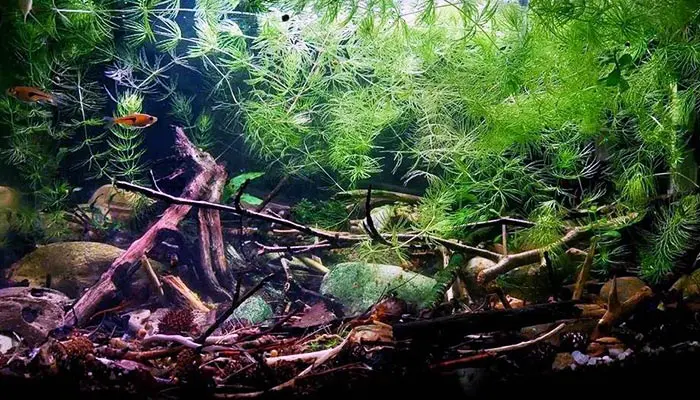

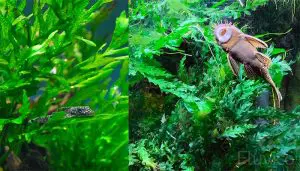


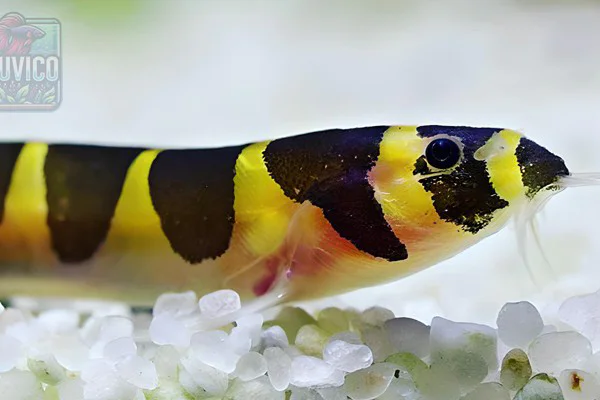

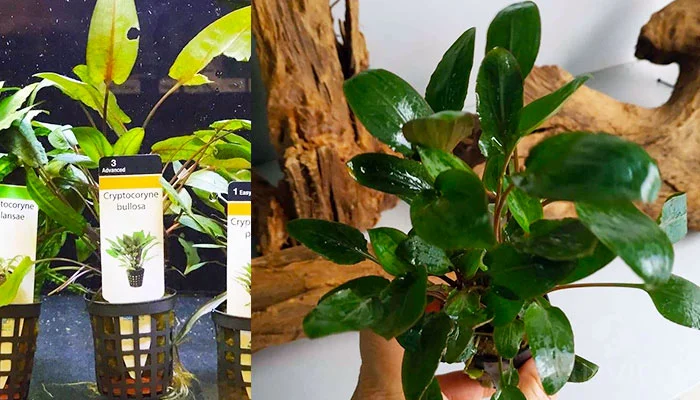

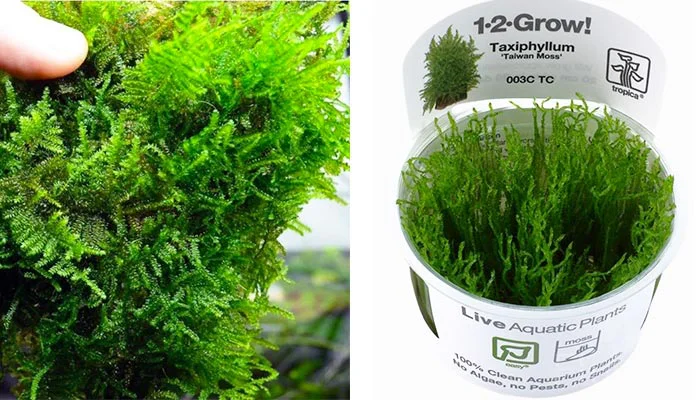

Hope you enjoyed our Hornwort Planting Tips & Growth Care Guide!
If you have any questions? Ask away, we’re here to help!